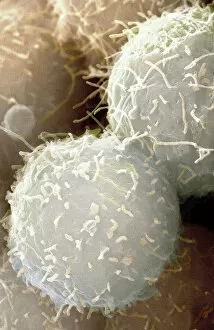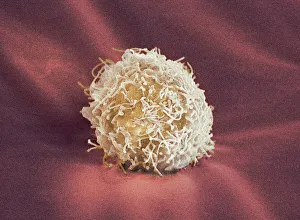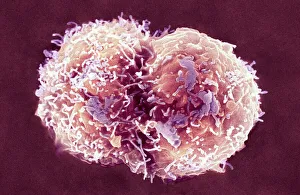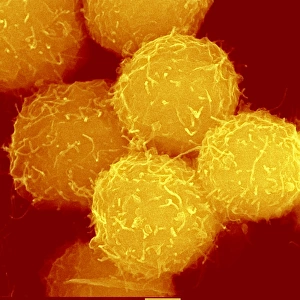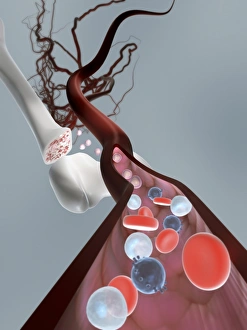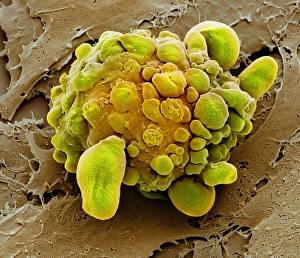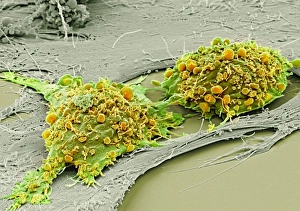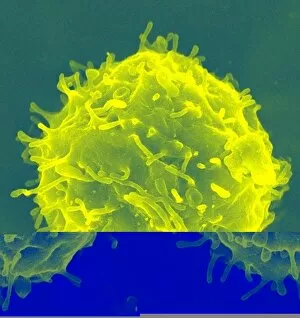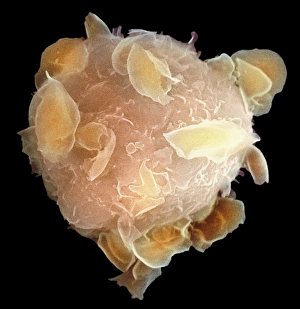Multipotential Collection
"Unlocking the Potential: Exploring the Fascinating World of Stem Cells through SEM" Delving into the microscopic realm
All Professionally Made to Order for Quick Shipping
"Unlocking the Potential: Exploring the Fascinating World of Stem Cells through SEM" Delving into the microscopic realm, stem cells take center stage under the scanning electron microscope (SEM). These versatile cells hold immense potential for medical breakthroughs and regenerative therapies. Captured in stunning detail, mesenchymal stem cells reveal their intricate structure under SEM. Their elongated shape and branching extensions showcase their ability to differentiate into various cell types, offering hope for tissue repair and regeneration. Haematopoietic stem cells also make a captivating appearance, captured both as a striking artwork representation and through SEM imaging. These remarkable cells reside within our bone marrow, responsible for generating all blood cell types essential for our immune system's proper functioning. The mesmerizing images continue with dying stem cells caught in action under SEM. This glimpse into cellular life cycles highlights the importance of understanding how these processes occur to harness their full potential effectively. Multipotentiality shines brightly throughout this visual journey – from embryonic development to adult tissues. The sheer diversity of stem cell populations showcased underscores their capacity to transform into specialized cell types like nerve or muscle cells when guided appropriately. As we unravel more about these enigmatic entities, scientists strive towards unlocking their secrets further. With each image revealing new insights into cellular behavior and differentiation pathways, we inch closer to harnessing the power of multipotentiality for groundbreaking advancements in medicine and beyond. In this microscopic world where possibilities seem endless, stem cells emerge as beacons of hope – promising a future where regenerative therapies can revolutionize healthcare by repairing damaged tissues and combating diseases at their core.

